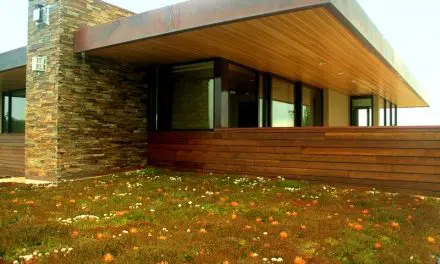In an effort to reduce water use and time spent caring for lawns, some gardeners are replacing their turf with thyme. Thyme is an ideal eco-lawn alternative. It requires less water, is generally tough (see “walking on thyme” below), drought resistant, hardy all the way north to zone 4 if it’s healthy, and will spread easily to fill in most of the space that you want it to. The best thing: it becomes a carpet of attractive, lavender-colored flowers that lasts long into the season. If you’re looking to replace your thirsty grass with something more xeric, consider thyme.
There are downsides to putting in a thyme lawn, though – like cost. When you’re planting plugs of thyme 6 to 12 inches apart, you can burn up a lot of cash fast. Most sources recommend planting smaller areas. If you have a croquet court-sized yard (in other words, large) you might want to consider planting only part of it in thyme to start. You can always go back and expand your thyme planting another season. The other down-side is the labor it takes to get your thyme in the ground. You’ll need to kill off all the grass where you intend to plant first. This can be a slow and difficult process.
How to do it? The easiest way is to use multiple applications of some nasty herbicide like Roundup. But you’re not in this for easy – you’re in it to protect yourself, your loved ones, and the environment at large from harmful sprays. Digging it up is a poison-less way to do it but a lot of work. You can’t just yank up sod, leaving behind roots that will result in another layer of grass popping up. If you do dig — if you have a small space that will be manageable — dig deeply and make sure you remove any trace of roots.
Another tried and true way to remove turf is to smother it in black plastic. Make sure the plastic has no holes and that it extends several inches beyond the turf. Weigh it down with rocks or mulch. It may take as long as a full season — 3 months — to completely kill the grass. In the end, be sure to till once the plastic is removed.
Another way is to cover the grass completely with newspaper and then mulch. Water evenly to soak the mulch and press the paper against the grass. The paper will eventually decompose (we like to say “compost”) and at that point the grass will have decomposed as well. Again, turn the soil completely, pulling out any roots that remain. We told you it was work, didn’t we?
Soil for thyme should drain well for best results. It’s also wise to add bonemeal or rock phosphate before planting. Compost — as always — is a good idea. When tilling in these amendments, do it to a depth of only six inches or so; not the standard 12 inches (thyme is a shallow rooter). If conditions are dry, water the thyme in pots thoroughly before placing them in the ground, then water your new thyme lawn thoroughly, to a depth of at least four inches. Thyme may be drought tolerant but it needs water to get established. Plant different kinds of thyme — silver, creeping, wooly — for a variety of colors and flowering times. A few of the popular culinary herbs — English thyme, citriodorous — could go around the edges for easy access.
Some gardeners mow their thyme after it flowers to keep it neat looking and encourage it to spread, but it’s not necessary.
Can you walk on thyme, like you could turf grass? Yes, once it’s established, but not too much – especially when dry. Protect your eco-lawn by making a path with stones or pavers for high traffic areas. And when you do walk on it, enjoy the smell that rises from your feet!
This article originally appeared on Planet Natural. Visit their site to learn more and to check out their quality natural and organic products for the home, lawn and garden. Whether you’re looking for a compost tumbler, a natural sunblock or some gardening advice, they’ll help you find what you’re after. Their friendly, garden-savvy staff is capable of answering most questions and if they can’t… they’ll research the answer for you.








